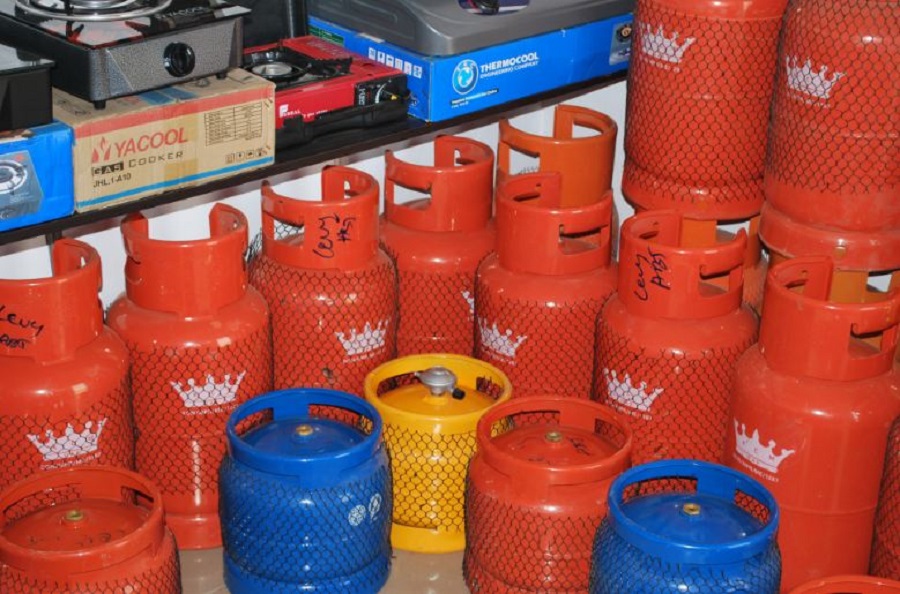Last week, reports of the rising price of Liquefied Petroleum Gas (LPG), also known as cooking gas, were rampant. The price of cooking gas in Nigeria is now estimated to have risen more than 60% since December 2020, peaking to as high as N500 per kilogram (over N6,000 for a 12.5kg cylinder) last week. As a result of this, many people, particularly low-income earners are returning to dirtier fuels like charcoal, firewood, sawdust and kerosene.
Even worse, the Federal Government (FG) appears to be mulling returning Value Added Tax (VAT) on LPG, a tax that was officially removed in 2019 for “locally produced” LPG. The move to return tax on the product is inconsistent with the FG’s recent moves – the LPG expansion programme, the N250 billion Central Bank of Nigeria (CBN) gas expansion loan and the inclusion of clean cooking targets in the recently submitted interim updated Nationally Determined Contributions (NDCs).
The World Health Organisation (WHO) reports that Nigeria loses 94,300 lives yearly as a result of smoke from the kitchen, especially in vulnerable populations like women and children. Also, cooking with dirty fuels results in respiratory problems, skin cancer, eye problems and food poisoning. One report by an American Professor revealed that a typical wood fire is about 400 cigarettes an hour worth of smoke.
Nigeria should ordinarily be a top performer in clean cooking since it is rich in natural gas and other resources required for clean cooking. Yet in 2018, Nigeria was one of the lowest consumers of LPG. Also, an African Energy Outlook 2019 report revealed that while 24% of Ghana’s population and almost 55% of urban households in Côte d’Ivoire relied on LPG for cooking in 2018, only 10.5% of Nigeria’s population used LPG – this is despite the fact that Nigeria has the largest natural gas reserves on the continent.
With 2021 to 2030 declared a decade of gas for Nigeria, one would expect to see intense activities around easing accessibility to LPG, policies to reduce costs to last-mile consumers, and a general commitment to accelerate the rate of deployment of gas-led solutions, yet that is not the case. Colman Obasi, the National President of the Oil and Gas Service Providers Association of Nigeria (OGSPAN) attributes this failure to “policy inconsistency, inadequate funding, and low domestic utilisation.”
The policy inconsistency on LPG in clean cooking reflects the lack of substantial political will by the government. While there are fragmented policy statements and frameworks around clean cooking and the LPG market, there is no concrete regulation or plan for evaluating outcomes, conducting follow-up assessments or collecting data.
The 2018 National Energy Policy, 2016 National Renewable Energy Action Plan, 2015 National Renewable Energy and Energy Efficiency Policy, 2014 National Energy Master Plan, 2012 Renewable Energy Master Plan and the 2007 National Biofuel Policy all provide for some targets for increasing LPG penetration and enhancing clean cooking, although each with different goals.
The National Energy Master Plan specifically lists as part of its action plan the setting of subsidies on LPG to achieve affordability with a 2030 goal, while the National Biofuel Policy pledges to create an enabling environment for the achievement of 100% domestic production of biofuels consumed in the country by 2020 – a date now passed.
In spite of these documents, the government has continued to fund kerosene subsidies. According to a 2018 report by International Center for Investigative Reporting (ICIR), while kerosene subsidy in Nigeria was officially removed in 2009, successive governments have continued implementing it in various ways. The report reveals that in 2015, the FG spent as much as $1 billion on kerosene subsidies alone, and that the subsidised product barely gets to low-income households – instead, it benefits the importing companies and local wholesalers, some of whom smuggle the kerosene into neighbouring countries and sell for higher.
As it turns out, there is no paucity of policy statements and plans for LPG penetration. Thus, other solutions must be explored. First, an attempt to re-impose VAT is entirely counterproductive – a host of other sectors exist to grow federal revenue without crippling clean cooking goals.
Also, beyond the incoherent and often contradictory policy statements and sparse regulations, there is a need for proper legislation on clean cooking which will specifically include LPG and other clean cooking mechanisms and set high safety standards for LPG cylinders. As proposed in the Energy Master Plan, the government should explore transposing petrol subsidies and any existing kerosene subsidies to fund LPG clean cooking subsidies, with a focus on low-income areas.
As exchange rate fluctuations and other import charges due to reliance on imported LPG are also a major challenge, the government should incentivise domestic gas production, especially from the recently awarded marginal fields. Additionally, with the resumption of the national gas flare commercialisation programme and the rapid expansion of the Nigeria Liquefied Natural Gas (NLNG) trains, available domestic gas is expected to increase. A government agency should also be specifically tasked with handling clean cooking to ensure coherence and targeted commitment to achieving clean cooking goals.














This is really enlightening.
I really hope the Nigerian government look into this, and effect a change.
Hello Caleb,
Good Piece from You.
God’s grace to write.
Bode, Richard
Hello Caleb,
Good Piece from You.
Bode, Richard